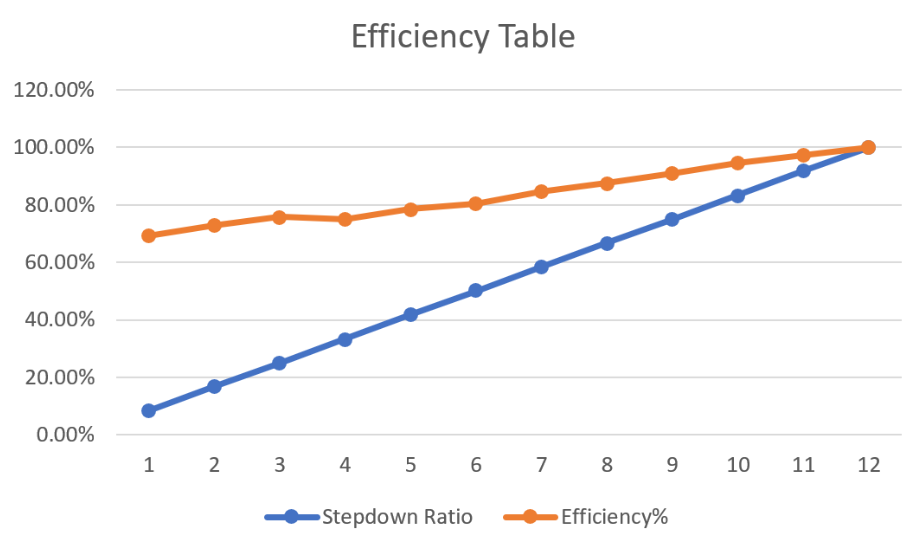Buck Converter Efficiency
By: Mohammad Yakoub (Mission, Systems, and Test)
Verified By: Jordan Smallwood (Project Manager)
Approved by: Miguel Garcia (Quality Assurance)
A Buck converter is a DC-to-DC power converter which steps down voltage (while stepping up current) from its input to its output. Switching converters such as buck converters provide much greater power efficiency as DC-to-DC converters than linear regulators, which are simpler circuits that lower voltages by dissipating power as heat, but do not step up output current. That is why we considered to use it to step down the output of our main battery to a voltage that can work for our Arduino board. The efficiency of the buck converter is extremely high reach 90% efficiency and higher in some cases. However from my experience with the buck converter the efficiency of the buck converter seems to decrease as the difference between the input and output increases. Fortunately, for the purposes of our build we are stepping from 12v volts to 9v, which puts us at 91% efficiency. The efficiency testing the power of the input vs the power of the output under different step down ratios. The input voltage is 12v, different output voltages that were tested. Starting from 1v to 12v, and each step I measured the power of the input and the power of the output and from there I was able to calculate the efficiency of the buck converter at different step down ratios.
Figure 1: Plot of Buck Converter Efficiency at Various Step-Down Ratios
References:

